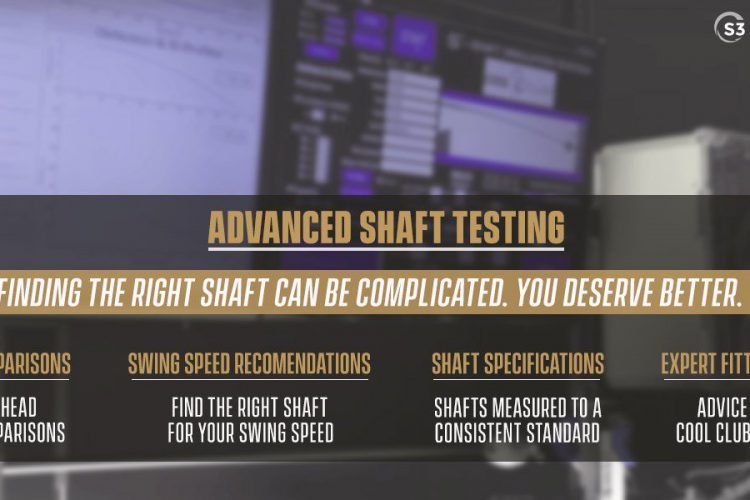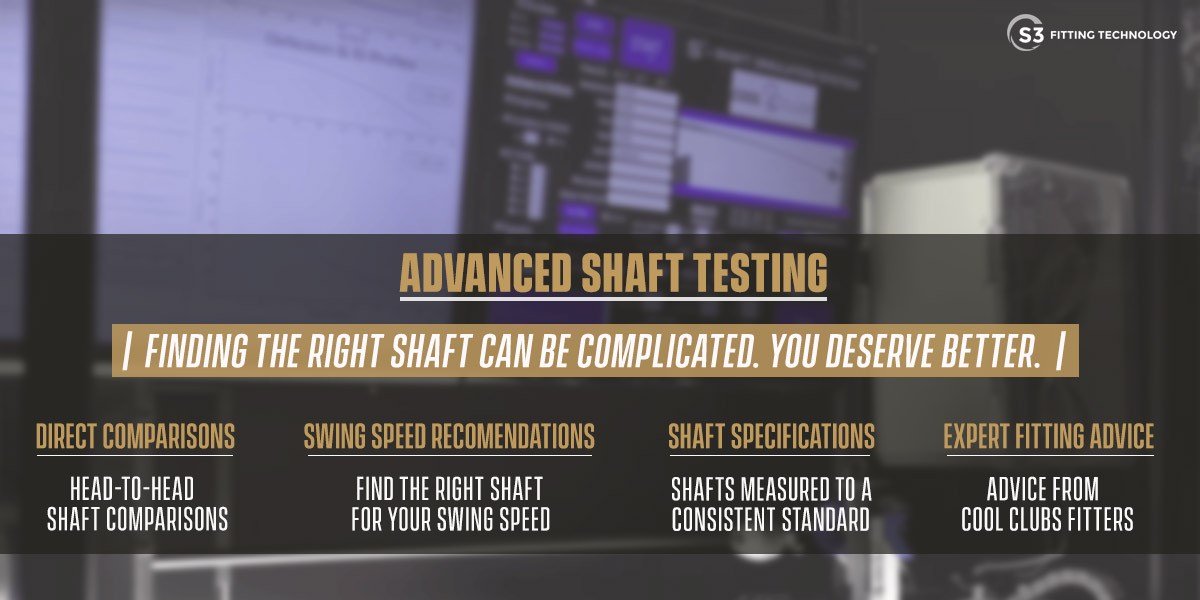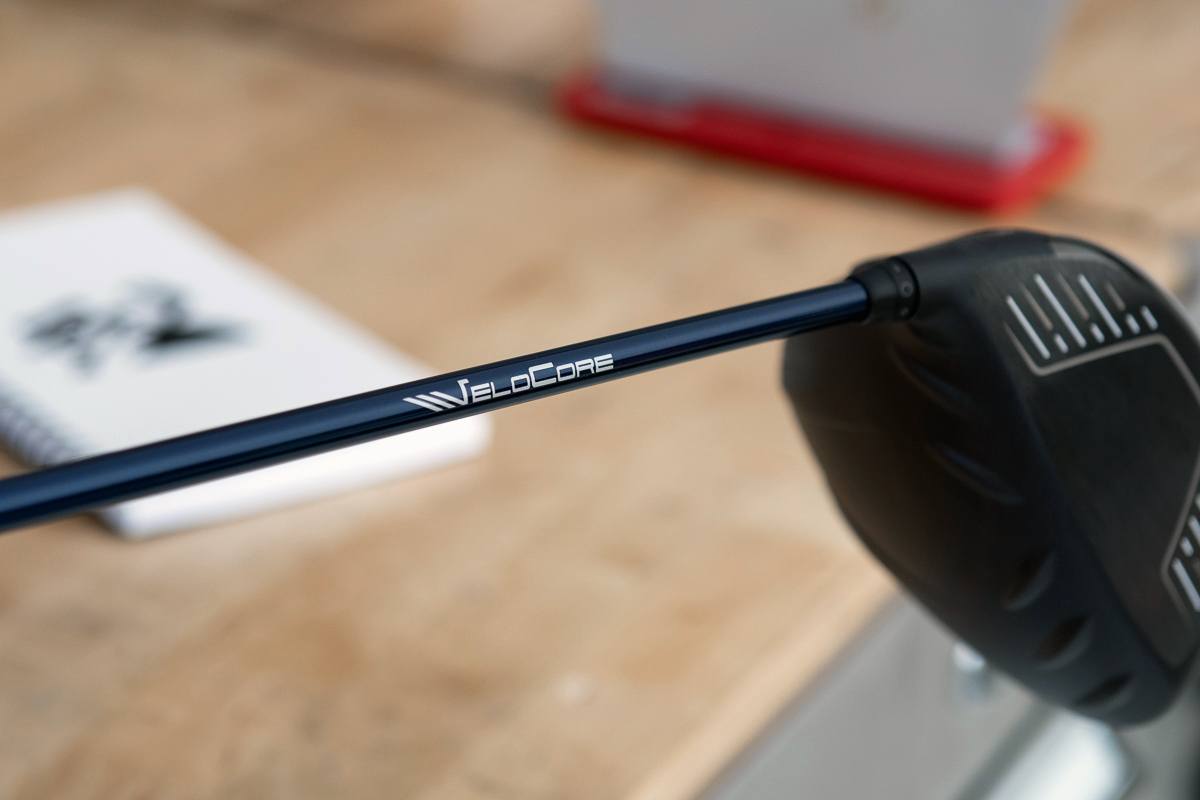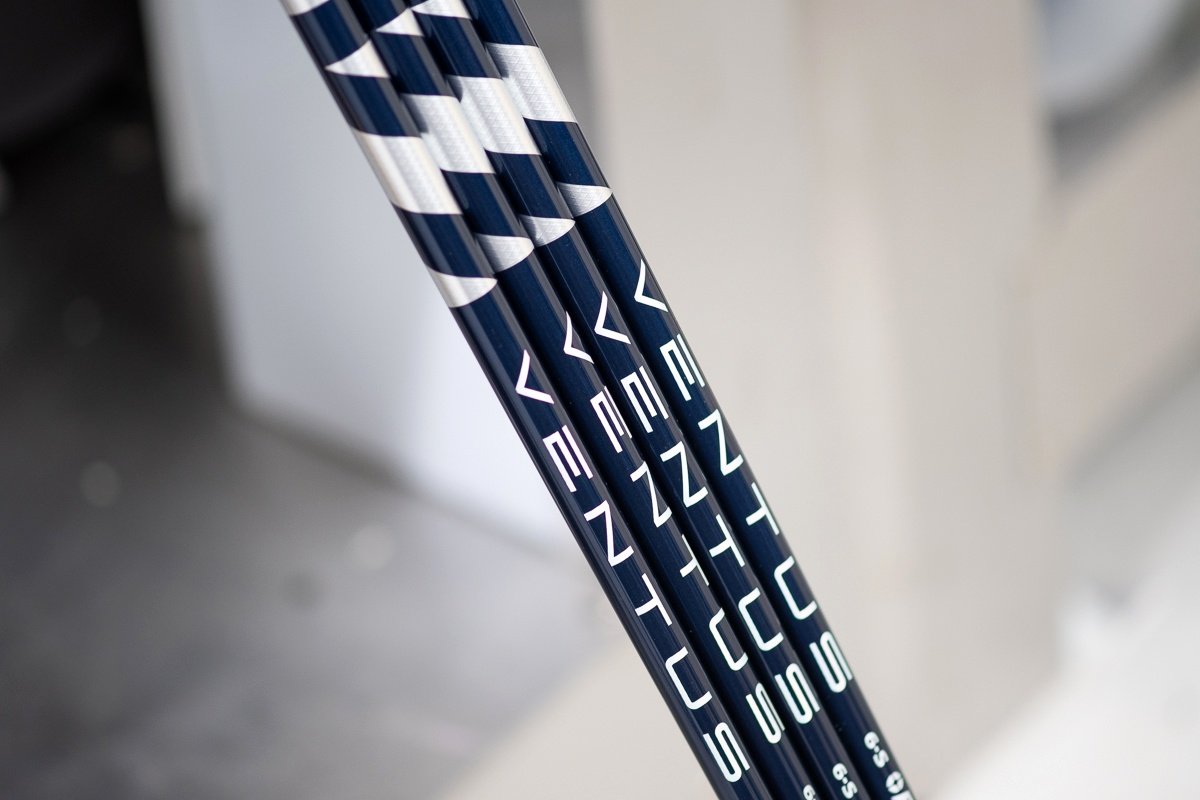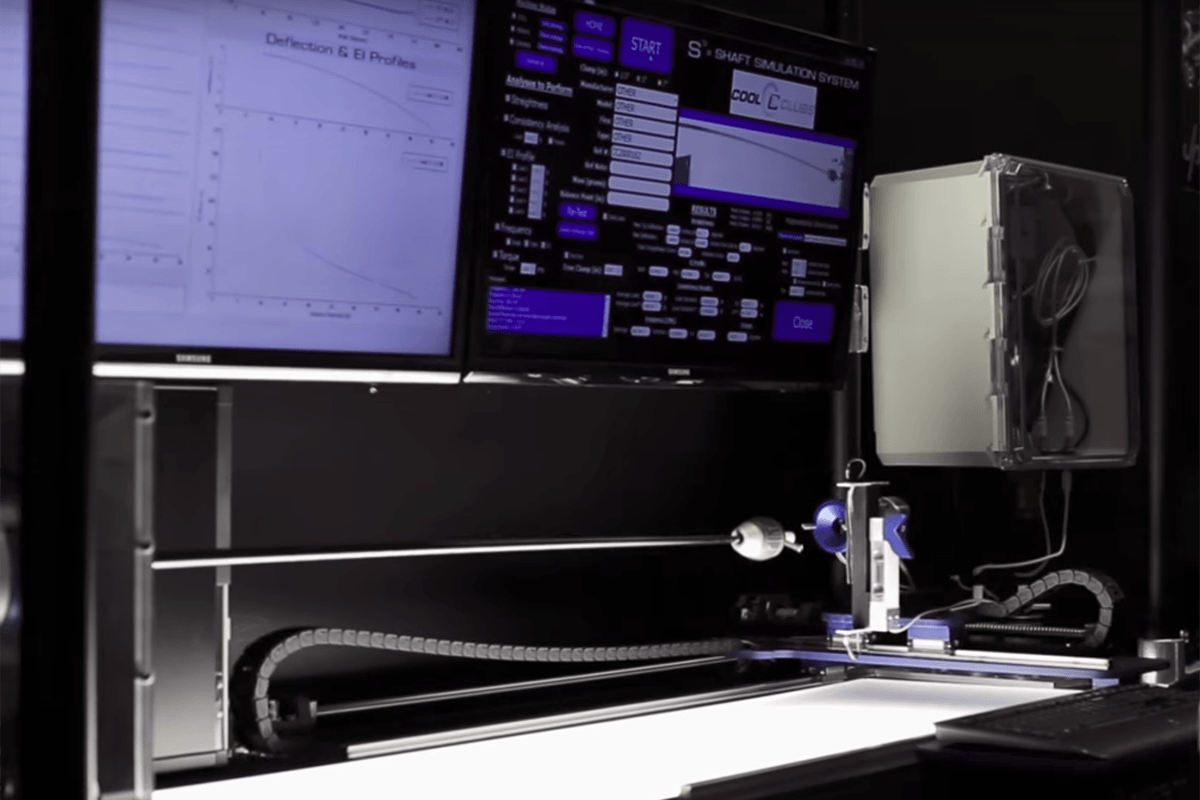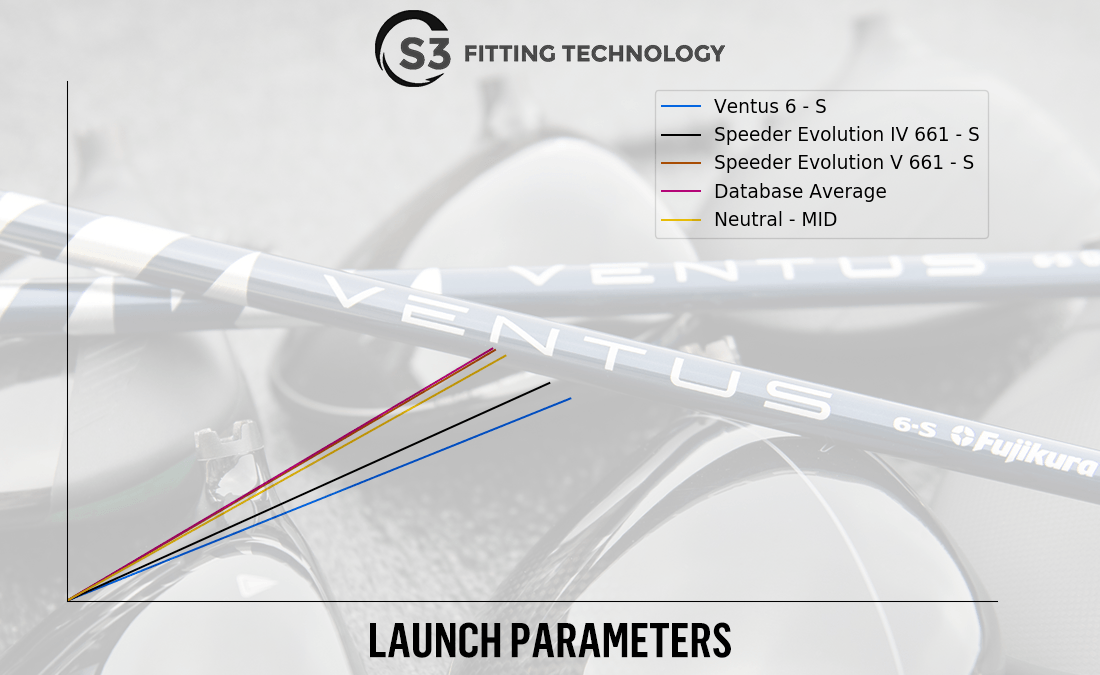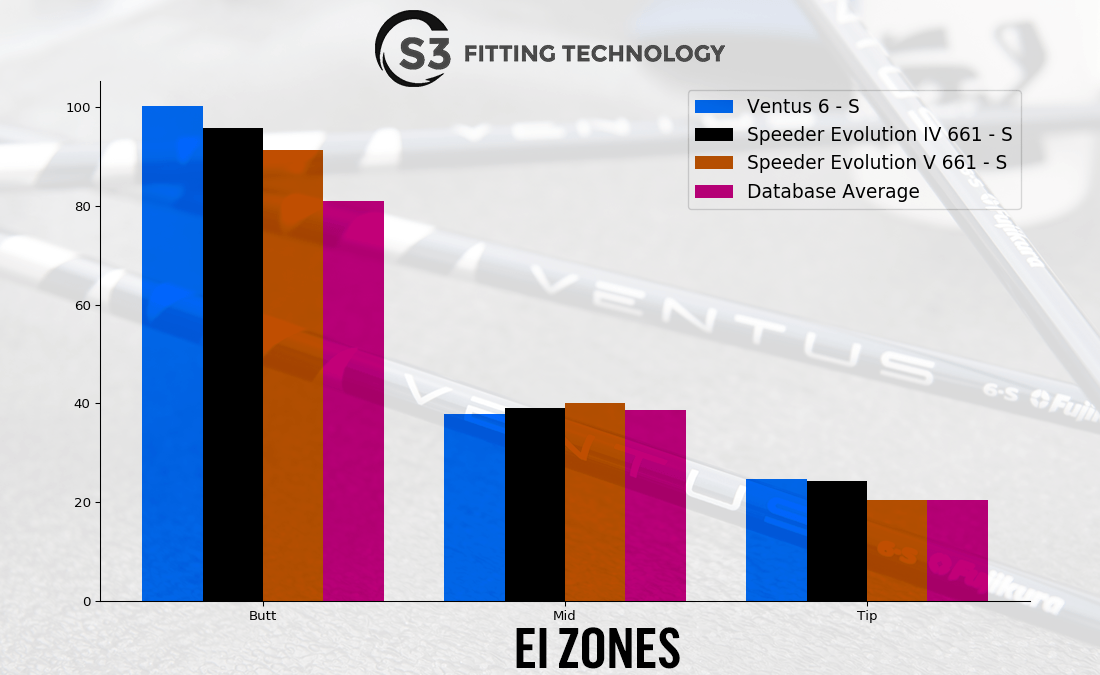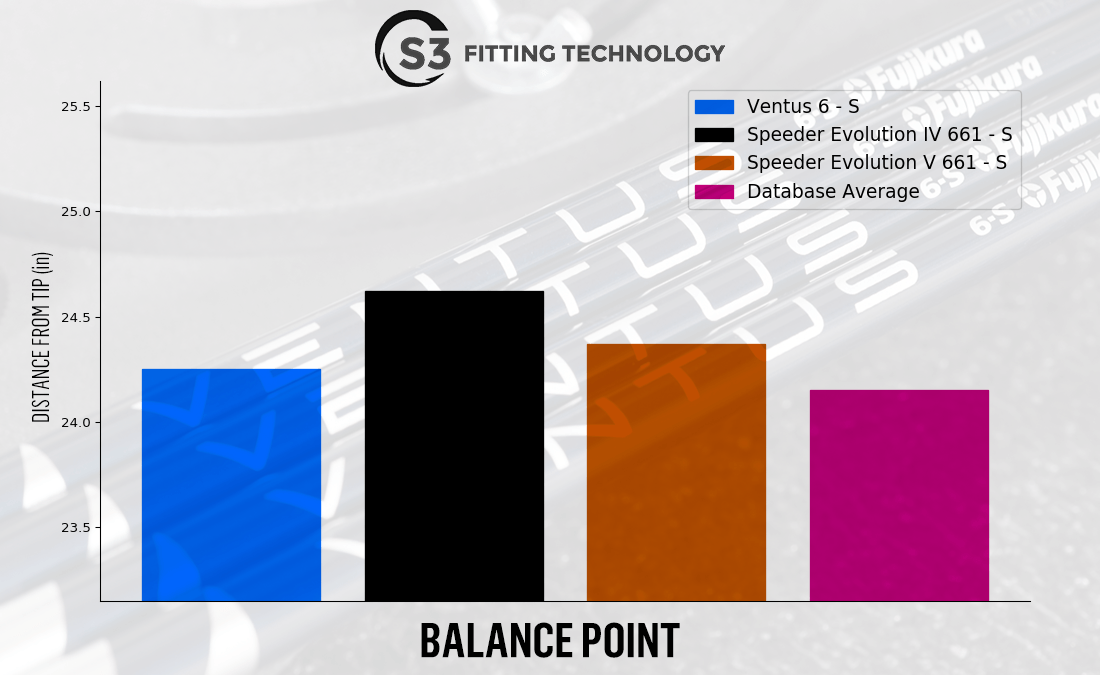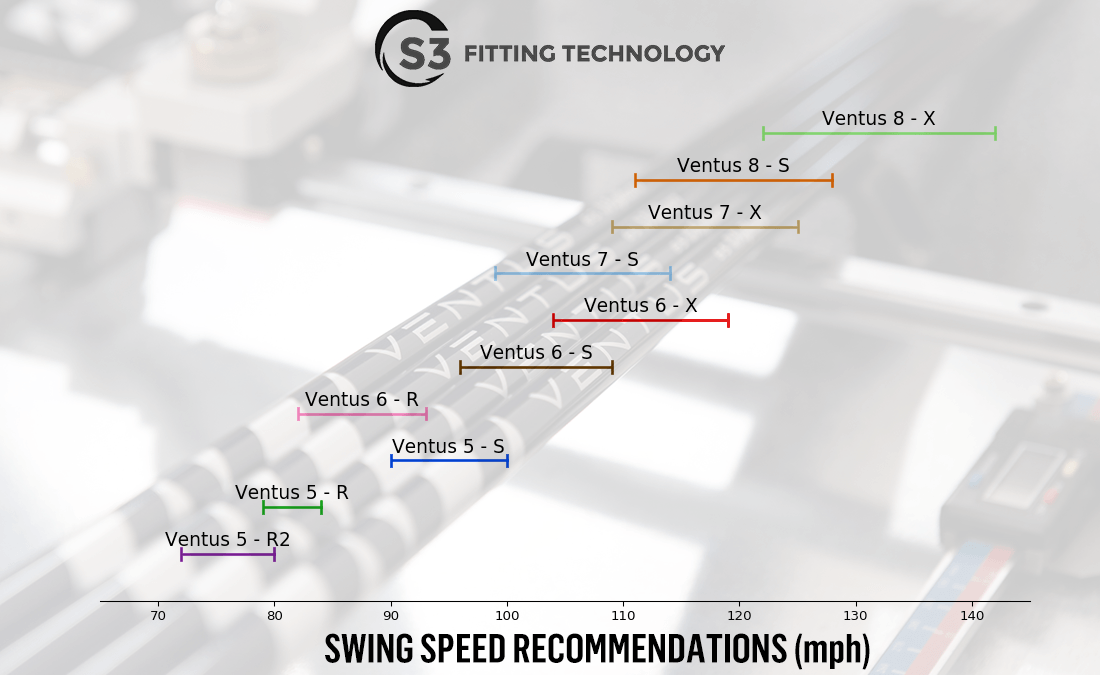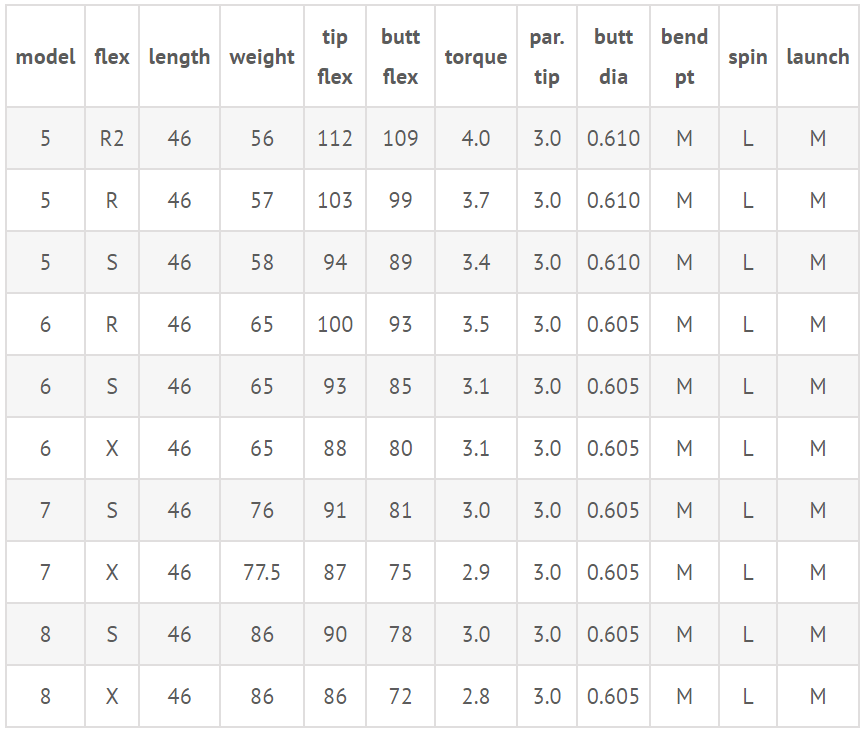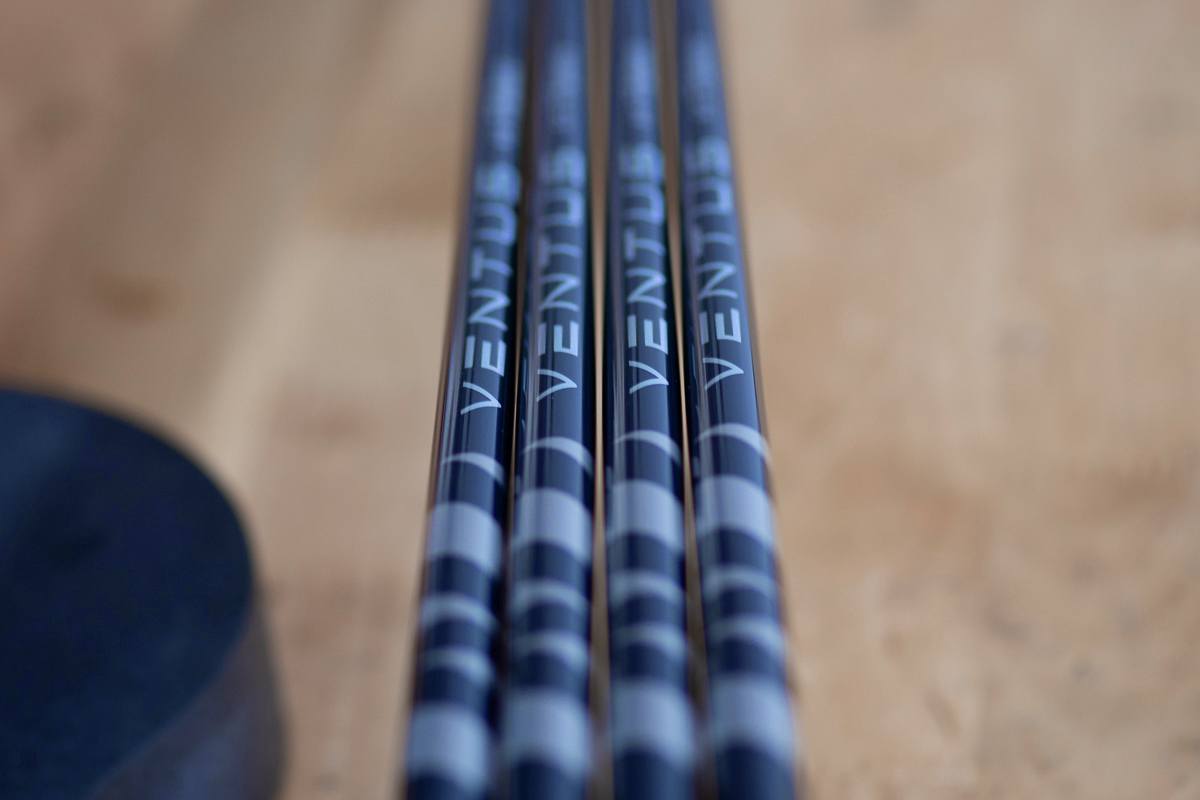Shaft stories tend to be more alike than different. That’s certainly true when you reach the upper levels of the premium range where nearly everyone is using some flavor of exotic materials to create a low launch, low spin pole capable of holding up against the forces levied by the most aggressive of swingers.
Sound familiar? Throw in a sexy paint job and we’re rolling.
The paint stuff is inherently subjective, but otherwise, Fujikura’s Ventus checks most of the expected boxes. It’s a premium offering – arguably even more premium most of Fujikura’s aftermarket models. The mid-launch and low-mid spin characteristics, while not textbook, speak to the fact that not everyone needs an ATMOS TS Black. Fujikura’s launch and spin chart puts it in the general vicinity of the PRO 2.0 TS and the EVO IV. While there are a plethora of reasons why your actual mileage may vary, it should give you a reasonable idea of where Ventus fits with respect to the industry-standard launch and spin story.
Add the requisite reference to exotic materials (in this case, Pitch 70-ton carbon fiber), and we’re more or less where a good percentage of shaft stories end, but with Ventus, we’re only just getting started.
VeloCore Technology
At the heart of Ventus is what Fujikura calls VeloCore technology. The name comes from the idea that Ventus offers velocity at its core, and while I suppose we have to allow everyone a bit of marketing leeway, the larger point is that the magic of Ventus lies not in its launch and spin properties, but in its construction.
The summary version of which is that Ventus features full-length, pitch 70-ton fiber in the bias layer. While we’ll likely dive deeper into construction in upcoming Shaft University features, let’s see if we can’t make some quick sense out what that means.
Pitch 70 is the exotic/premium carbon composite material that helps create Ventus’ low-ish spin properties. While we don’t expect you to be experts on carbon fiber, what you should know is that Pitch 70 is 150% stiffer than the T1100g material featured in numerous low spin shaft designs.
Golf shafts are assembled by rolling layers of carbon fiber around a steel mandrel. The individual sheets of fiber – called flags – often include different types of carbon fiber, and those sheets are placed at different orientations over the length of the shaft. Flags in the bias layer are oriented at 45°, and it’s unusual for a premium (exotic/expensive) material to be used over the full-length of a shaft. More commonly, materials like T1100 are used to strategically stiffen specific areas of the shaft, with the tip being the most common placement.
Leveraging stiffer materials like Pitch 70 can result in a shaft that feels overly stiff or boardy, so to create a smoother, easier-loading shaft, Fujikura leverages an accelerated taper design along with less rigid 40-ton carbon fiber to enhance feel.
That’s a whole lot of words to hopefully explain why Fujikura says Ventus is more resistant to twisting over the length of the shaft than conventional designs. Less twisting (which also speaks to Ventus’ low torque properties) means the face is delivered closer to square with impact closer to the center of the face. That ultimately means more consistent ball speed, a better starting line, and tighter dispersion.
It’s why Ventus is billed as an MOI-booster of sorts. It’s a bit like the old BASF ads. Fujikura doesn’t make the clubhead you play, but with Ventus, Fujikura makes it better…or at least more consistent.
Ventus On Tour
It’s relatively early in Ventus’ lifecycle, and while it can take time for a shaft to catch on tours, the initial reception has been a warm one. Fujikura’s Fitting & Tour Rep, Marshall Thompson, says word of mouth has been excellent, and he’s been fielding more calls than usual about the shaft. Ventus is already getting its fair share of tour play. Recently there were 14 in play at the AT&T Byron Nelson (including the winner’s driver). Ventus has also found its way into bags on the Web.com and LPGA tours as well. No shaft works for everyone, but when a shaft is working well for the ladies as well as the men, it speaks to the versatility of the design.
Now that we’ve covered what Ventus is, let’s take a closer look at some of its other performance characteristics.
VENTUS Data and Comparisons
To make our shaft coverage more meaningful (and useful) to our readers, we’ve partnered with Cool Clubs, the Golf Industry’s Leading Custom Fit Club Company, to bring you shaft reviews powered by its Shaft Simulation System (S3). In case you missed it, check out our story detailing why we believe S3 provides the best insights into shaft performance.
“S3 Technologies utilizes the most advanced shaft testing technology in the industry. The Shaft Simulation System (S3), which was developed in 2013, is a fully-automated, all-in-one shaft profiling machine. In a matter of minutes, the S3 determines the following shaft specs: (Straightness, Consistency Profile, EI Profile, CPM Analysis, and Torque. While some of the aforementioned specs can be obtained from shaft manufacturers, a lack of industry standards prevents that data from being used for accurate apples-to-apples comparisons. S3 Technologies solves this challenge by testing all of our products in-house using the S3. This gives S3 Technologies a unique and in-depth understanding of the quality and performance of the industry’s shafts.”
Not only does S3 give us standardized quantitative information about the shaft(s) being reviewed, the data we share will provide you with a much better sense of how those shafts compare with similarly specced offerings on the market today.
Using S3 data, we’ll be providing a comparison of the Ventus to similar shafts in the S3 database, as well as other Fujikura shafts. Comparisons are based on stiff flex shafts in the 60-gram range.
Launch Characteristics
The pink line represents the S3 database average for stiff flex shafts in the 60-70g weight range. The yellow line represents a neutral profile – effectively the baseline for what we would describe as a mid-launch profile.
Based on measurements from Cool Clubs S3, The Ventus is classified as a LOW/MID launch shaft. As a result of its stiffer tip section, it can be expected to launch lower than other Fujikura shafts with similar EI profiles.
Zone EI
The following chart compares the stiffness of the Fujikura Ventus in the butt, mid, and tip sections to the S3 database average of stiff flex shafts in the 60-70g range as well as two other Fujikura shafts.
The Ventus 6S has a stiffer butt section, slightly softer midsection, and slightly stiffer tip section than the average of the shafts in the Cool Clubs S3 Database. The stiffer tip section helps create a lower launch with less spin.
Balance Point
The following chart compares the balance point of the Ventus to the S3 database average of stiff flex shafts in the 60-70g range.
The balance point is slightly higher than that of the average shafts in the database but slightly lower than two other great shafts from Fujikura – the Speeder Evolution IV & V 661’s.
As you may recall from our Golf Geeks Story on Shaft Performance, a higher balance point allows for more head weight without drastically impacting the swingweight. For golfers seeking more distance (admittedly often at the expense of accuracy), this allows drivers to be built to longer playing lengths.
Swing Speed Recommendations
Note that these recommendations are based on the full range of Cool Clubs‘ building and fitting capabilities, including factors such as tipping and build length which can cause a shaft to play either softer or stiffer.
To simplify things a bit, you may wish to narrow these ranges. The sweet spot from a fitting perspective begins 25% from the slow end of the range. As a general rule, players with faster tempos, particularly in transition may fit into a stiff flex, while smoother swingers often fit into a softer flex.
Advice from the Cool Clubs Fitting Team
The Ventus shaft is offered in a variety of weights and flexes. There are ten options ranging from Ventus 5 (high 50-gram range) to the Ventus 8 (mid 80 grams). As with many aftermarket options, Ventus can work for elite players or players with high clubhead speed; however, the breadth of options allows for fitting across a wide range of speeds.
The name “Ventus” translates to wind, which is fitting given that Fujikura’s latest creation works to maximize the energy transfer through a golfer’s swing. The engineers at Fujikura use a non-conventional and accelerated taper rate (how quickly the shaft’s diameter transitions from wide (butt section) to narrow (tip section) to create more efficient loading. Combined with the type and variety of materials that are integrated into this shaft, the energy created during the swing is smoothly transferred from butt to tip. The materials are stronger without increasing weight.
The Ventus graphics offer a sleek dark blue paint scheme using Fujikura’s Phantium finish. Phantium is up to 70 percent lighter than typical graphics and other cosmetic details, but still maintains a premium look and feel.
What does this mean for the golfer? For those who swing in the 105 to 120 mph range, the Ventus 6S is a low spin, tight dispersion shaft — your shots will stay in the fairway. The stiffer tip section keeps the spin down but won’t negatively affect the launch angle. Whether you’re fast tempo or slow tempo, swinging an easy 80% or trying to swing out of your shoes, Ventus can keep up with you and keep your dispersion tight. Often, higher swing speed golfers fear amping up to the next gear because the result might be a ball headed off into the rough. That won’t happen – or at least it will happen less – with the Ventus. It is an exceptionally stable shaft that just does not twist through the swing, so there are fewer power leaks from off-center hits.
Remember the old finger traps that you played with as a kid? You put your two index fingers into either end of a woven bamboo cylinder and pulled in opposite directions. The harder you pulled, the tighter the cylinder became longitudinally until your fingers got stuck. This shaft works similarly. The more stress you put on it, the more efficiently it performs! If you don’t quite hit the sweet spot on the clubface, the result will not be overly penalizing. The Ventus helps limit twisting, which keeps the face more square through impact. Squarer impact means straighter ball flight, higher ball speed, longer distance, and great misses!
During our fittings players often have two comments about the Ventus. The first is about how great the shaft feels. The second is about how good the misses are. These are both rooted in how the Ventus transfers energy and how little it twists.
It’s worth a test to see how Ventus can impact your dispersion and distance out on the course.
For more information on the Ventus shaft, visit Fujikuragolf.com.

